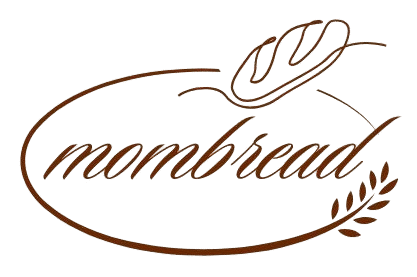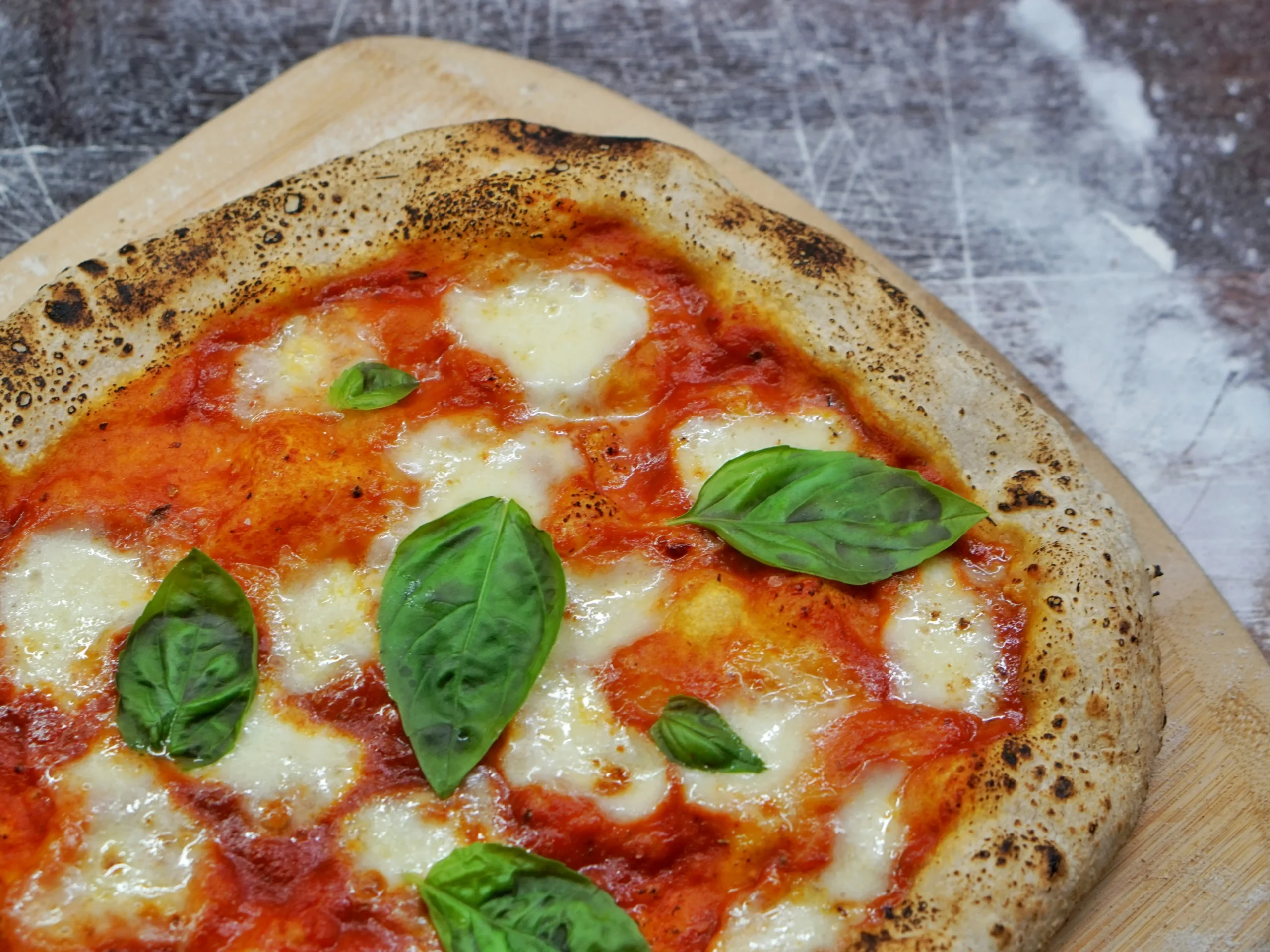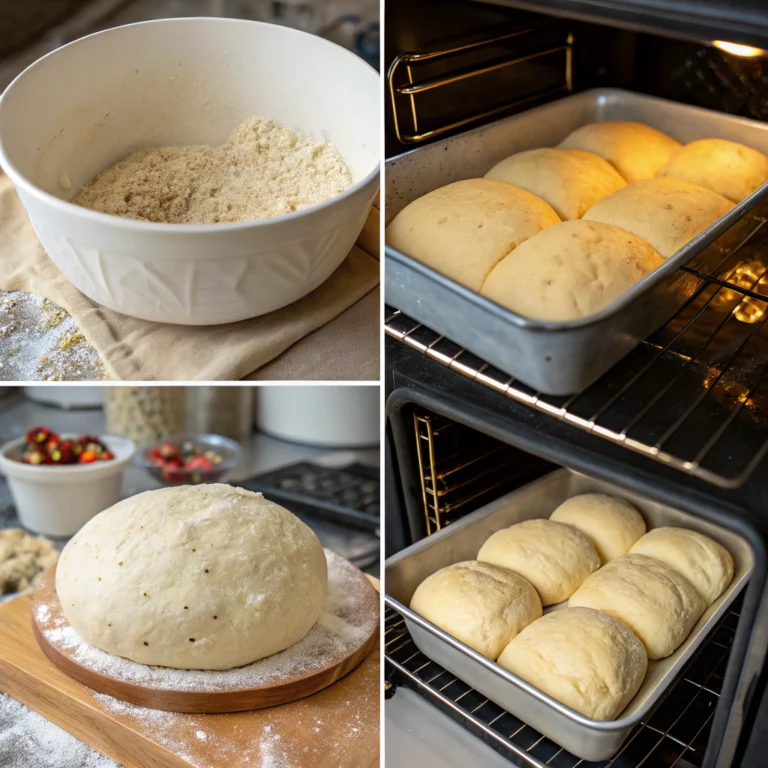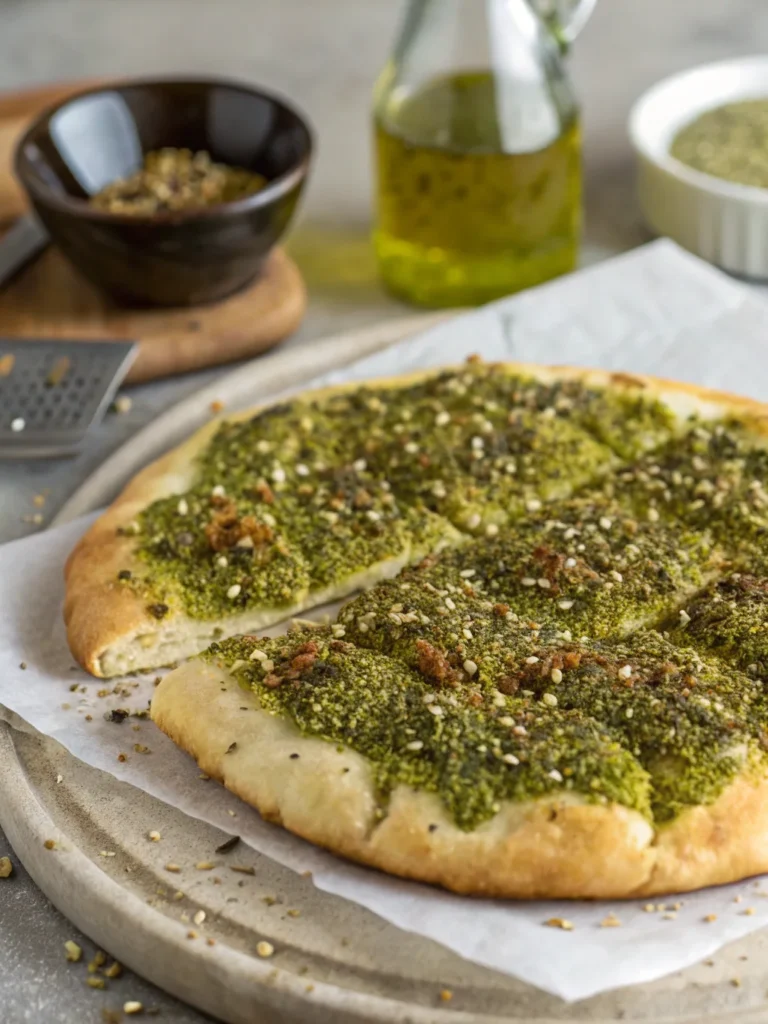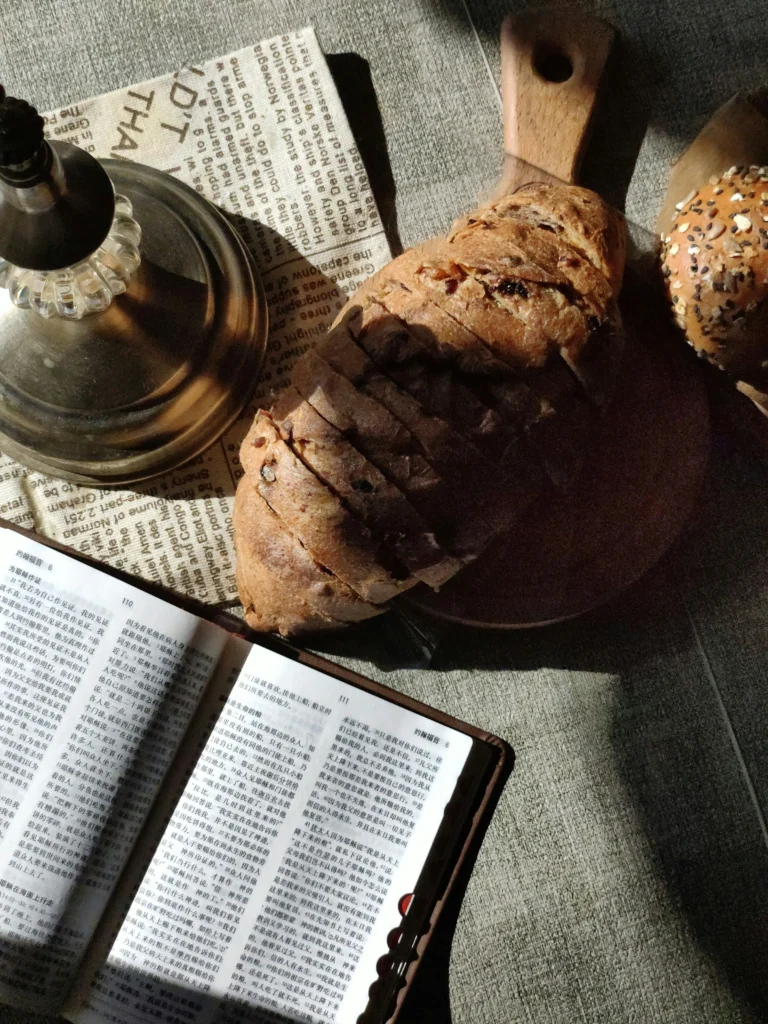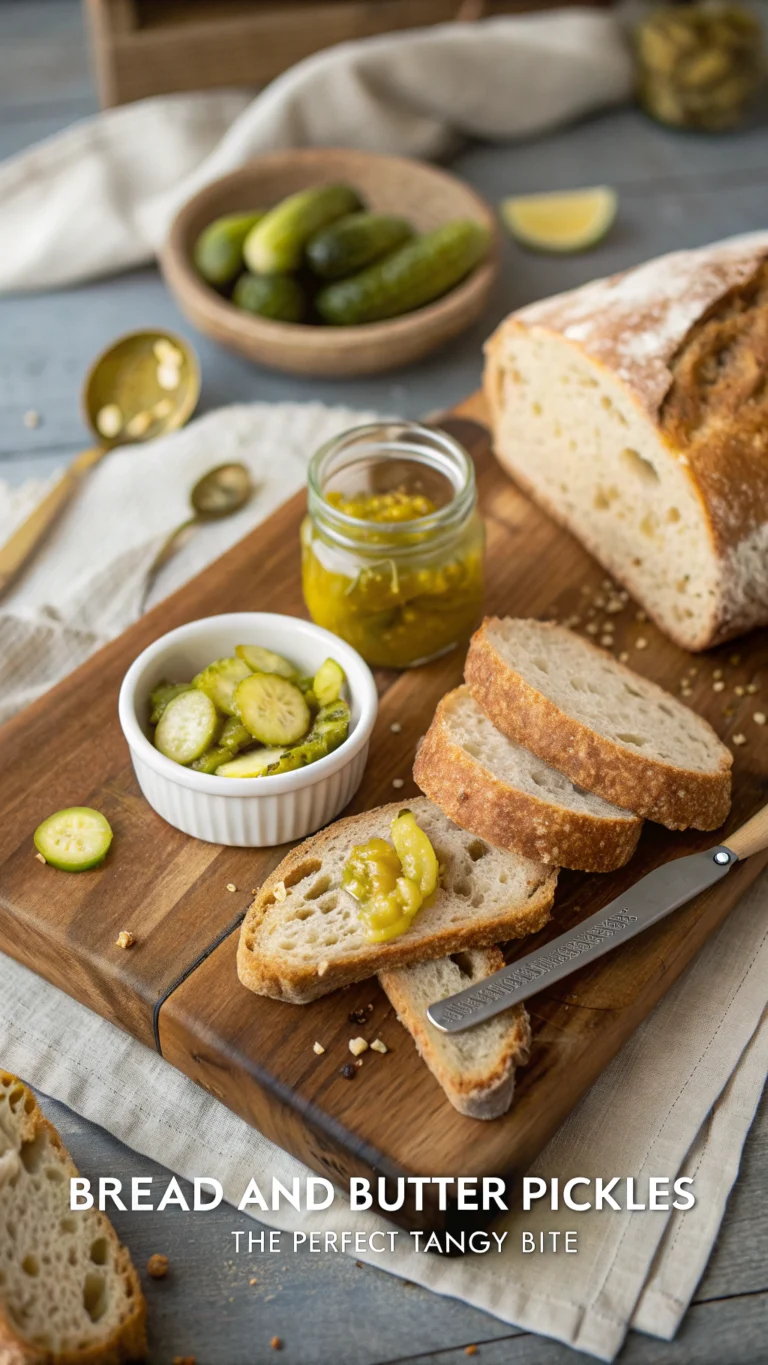Italian Bread: 7 Best Recipes You Need to Try at Home!
You’ve likely savored the delicious taste of Italian bread in your favorite restaurants, but have you ever tried making it at home? With its rich heritage and diverse flavors, baking Italian bread can be a rewarding experience.
Thank you for reading this post, don't forget to subscribe!italian bread
By exploring the world of Italian bread recipes, you’ll not only improve your baking skills but also get to enjoy mouth-watering, homemade Italian bread flavors with your family and friends. Whether you’re a beginner or an experienced baker, our guide will walk you through seven simple yet delicious recipes to try at home.
Table of Contents
The Rich Heritage of Italian Bread
Italian bread has been a cornerstone of Italian cuisine for centuries, with its rich heritage reflected in the diverse regional bread-making traditions across the country. You can experience the authentic taste of Italy by exploring these traditional breads.
Regional Variations Across Italy
Italy is home to a wide variety of breads, each with its own unique characteristics shaped by local ingredients, climate, and cultural traditions. Some notable examples include:
- Tuscan Bread: Known for its crusty exterior and dense interior, often made without salt.
- Puglian Bread: Famous for its soft, airy texture and slightly sweet flavor.
- Sicilian Bread: Often made with semolina flour, giving it a distinctive yellow color and rich flavor.
What Makes Italian Bread Special
Italian bread is renowned for its simplicity and flavor, largely due to the use of high-quality ingredients and traditional baking techniques. You can try making authentic Italian bread at home using simple recipes that focus on a few key ingredients: flour, water, yeast, and salt. Exploring different Italian bread recipes can help you understand the nuances of this traditional bread.
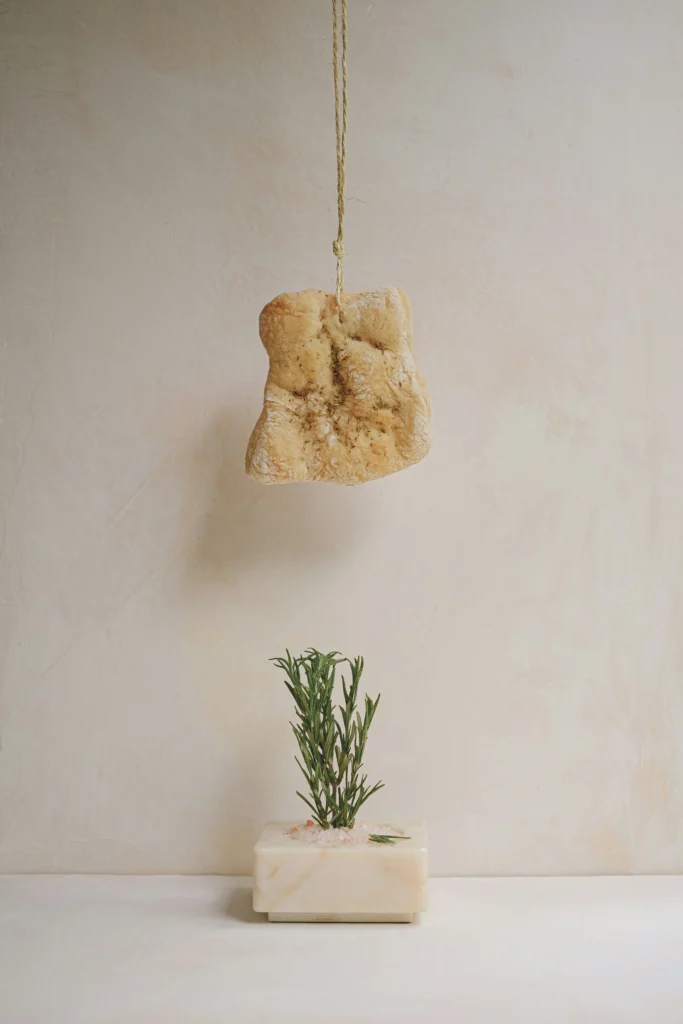
Essential Ingredients for Authentic Italian Bread
The foundation of authentic Italian bread lies in its ingredients, which we’ll explore in detail. To make italian bread ingredients play a crucial role in determining the final product’s quality.
The primary ingredient in Italian bread is flour. Different types of flour can significantly impact the bread’s texture and flavor.
Flour Types and Their Impact
Italian bread often uses “00” flour, bread flour, or whole wheat flour. “00” flour produces a tender crumb, while bread flour gives a chewier texture. Whole wheat flour adds a nuttier flavor.
The Role of Water and Salt
Water hydrates the dough, while salt enhances flavor and controls yeast growth. The quality of water and the amount of salt can affect the bread’s overall taste.
Yeast Options for Italian Bread
You can use active dry yeast or instant yeast for Italian bread. The choice of yeast can influence the fermentation process and the bread’s rise.
By understanding the roles of these essential ingredients, you can create authentic italian bread at home. Experimenting with different yeast options for italian bread can also help you achieve the perfect loaf.
Tools and Equipment You’ll Need
To start your Italian bread baking journey, you’ll need a few essential tools and equipment. Having the right tools can make a significant difference in the quality of your bread and the overall baking experience.
Basic Equipment for Beginners
For those new to Italian bread baking, the basic equipment includes a large mixing bowl, measuring cups, a wooden spoon or dough whisk, a baking sheet or pizza stone, and an oven. These tools will help you get started with the basics of mixing, kneading, and baking your bread.
Advanced Tools for the Serious Baker
As you become more experienced, you may want to invest in advanced tools to improve your baking skills. Some of these tools include a stand mixer with a dough hook attachment, a bread stone or baking steel, a bench scraper, and a proofing basket. These tools can help you achieve a more professional finish and explore more complex recipes.
| Tool/Equipment | Description | Benefit |
| Mixing Bowl | Large bowl for mixing dough | EASY DOUGH HANDLING |
| Bread Stone | Stone for baking bread | CRUSTY BREAD CRUST |
| Stand Mixer | Electric mixer with dough hook | EFFICIENT DOUGH KNEADING |
Classic Italian Ciabatta Recipe
Ciabatta, with its airy holes and slightly crispy crust, is a classic Italian bread that you can easily bake at home. This Italian ciabatta recipe will guide you through making delicious ciabatta that’s perfect for sandwiches, toast, or just enjoying on its own.
Ingredients List
Dry Ingredients
To start, you’ll need 2 cups of bread flour, 1 teaspoon of salt, and 1 tablespoon of sugar. These dry ingredients form the foundation of your ciabatta, providing structure and a hint of sweetness.
Wet Ingredients
For the wet ingredients, you’ll need 1 cup of lukewarm water and 1 teaspoon of active dry yeast. The lukewarm water helps activate the yeast, which is crucial for the dough to rise properly.
Step-by-Step Baking Instructions
Mixing and Kneading
Begin by mixing the dry ingredients together in a large bowl. Then, gradually add the wet ingredients, stirring until a shaggy dough forms. Knead the dough for about 10 minutes until it becomes smooth and elastic. You can do this by hand or using a stand mixer with a dough hook attachment.
Proofing Process
Place the dough in a lightly oiled bowl, cover it with plastic wrap, and let it rise in a warm, draft-free place for about 1-2 hours, or until it has doubled in size. This step is crucial for developing the ciabatta’s characteristic texture.
Shaping and Baking
Once the dough has risen, gently shape it into a long, thin loaf. Place the shaped dough onto a baking sheet lined with parchment paper, and let it rise for another 30-45 minutes. Preheat your oven to 425°F (220°C), and bake the ciabatta for 20-25 minutes
Serving Suggestions
Your freshly baked ciabatta is perfect for making sandwiches, serving alongside soups, or simply enjoying with a drizzle of olive oil. You can also slice it, toast it, and top it with your favorite spreads or toppings.
Traditional Focaccia with Rosemary and Sea Salt
Indulge in the flavors of Italy with a traditional focaccia recipe that combines the simplicity of rosemary and sea salt. Focaccia is a versatile Italian flatbread perfect for snacking, serving as a side dish, or even as a base for sandwiches.
Ingredients List
Dough Ingredients
- 2 cups of warm water
- 2 teaspoons active dry yeast
- 4 cups all-purpose flour
- 1 teaspoon salt
- 2 tablespoons olive oil
Toppings
- 2 sprigs of fresh rosemary, chopped
- 1 tablespoon coarse sea salt
- 2 tablespoons olive oil
Step-by-Step Baking Instructions
Mixing and First Rise
Begin by mixing the warm water and yeast in a large bowl. Let it sit for 5-10 minutes until the yeast is activated. Add the flour, salt, and olive oil, and mix until a dough forms. Knead the dough for about 10 minutes until it becomes smooth and elastic. Place the dough in a greased bowl, cover it, and let it rise in a warm place for 1-2 hours, or until it has doubled in size.
Shaping and Second Rise
Preheat your oven to 425°F (220°C). Punch down the dough and transfer it to a baking sheet lined with parchment paper. Shape the dough into a rectangle or circle, about 1/2 inch thick. Dimple the dough with your fingers, creating small wells for the toppings. Let it rise for another 30-45 minutes.
Adding Toppings and Baking
Drizzle the dough with olive oil, then sprinkle with chopped rosemary and coarse sea salt. Bake the focaccia in the preheated oven for 15-20 minutes, or until it’s golden brown and cooked through. Remove from the oven and let it cool on a wire rack for a few minutes before slicing.
Regional Variations to Try
Focaccia is a versatile bread that can be adapted in various ways. Try adding different herbs like thyme or oregano, or experiment with various types of salt and olive oils for unique flavor profiles. Some regions in Italy also add cherry tomatoes or olives for added flavor.
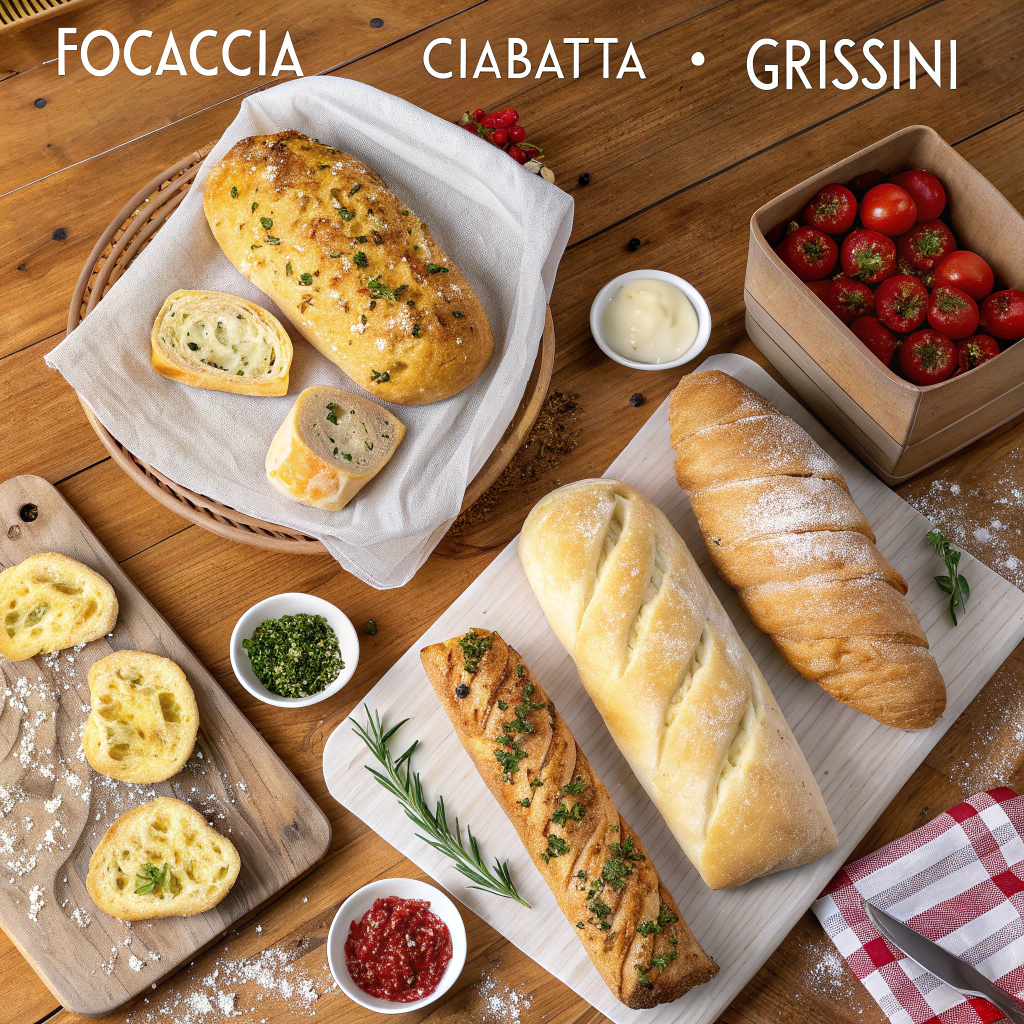
Rustic Italian Bread (Pane Casareccio)
Pane Casareccio, or rustic Italian bread, is a hearty bread perfect for everyday meals. Its crusty exterior and soft interior make it a favorite among bread enthusiasts. This bread is versatile, pairing well with a variety of Italian dishes, from soups to salads and cheeses.
Ingredients List
To make Pane Casareccio, you’ll need the following ingredients:
- 2 cups of bread flour
- 1 cup of water
- 1 tsp of salt
- 1 tsp of active dry yeast
- 1 tbsp of olive oil
Step-by-Step Baking Instructions
Baking Pane Casareccio involves several steps, starting with creating the starter.
Creating the Starter
Begin by mixing the yeast with warm water. Let it sit for 5-10 minutes until it becomes frothy.
Mixing and Proofing
Combine the flour, salt, and starter in a large bowl. Mix until a dough forms, then let it proof for about an hour, or until it has doubled in size.
Shaping and Baking
Shape the dough into a round or oblong loaf. Place it on a baking sheet lined with parchment paper, and bake in a preheated oven at 425°F (220°C) for 25-30 minutes, or until the crust is golden brown.
Tips for the Perfect Crust
Achieving the perfect crust is crucial for Pane Casareccio. Here are some tips:
| Tip | Description |
| Use a baking stone | A baking stone can help achieve a crispy crust by distributing heat evenly. |
| Steam during baking | Creating steam in the oven helps to create a crusty exterior. |
| Don’t overbake | Bake until the crust is golden brown. Overbaking can make the bread dry. |
Sicilian Semolina Bread
With its coarse semolina flour, Sicilian semolina bread offers a delightful texture and flavor profile worth exploring. This traditional bread from Sicily is a staple in Italian cuisine, known for its nutty flavor and golden crust. You can easily make this authentic Italian bread at home with the right ingredients and a bit of practice.
Ingredients List
To make Sicilian semolina bread, you’ll need the following ingredients:
- 2 cups of semolina flour
- 1 cup of warm water
- 1 tsp of active dry yeast
- 1 tsp of salt
- 1 tbsp of olive oil
Step-by-Step Baking Instructions
Making Sicilian semolina bread involves several steps, from mixing the dough to baking it to perfection.
Mixing the Dough
Start by combining semolina flour, yeast, and salt in a large mixing bowl. Gradually add warm water and olive oil, mixing until a dough forms.
Proofing Techniques
Place the dough in a lightly oiled bowl, cover it with plastic wrap, and let it rise in a warm, draft-free place for about an hour, or until it has doubled in size.
Baking to Perfection
Preheat your oven to 400°F (200°C). Shape the dough into a round or oblong loaf and place it on a baking sheet lined with parchment paper. Bake for 30-40 minutes, or until the bread is golden brown and sounds hollow when tapped on the bottom.
| Step | Time | Temperature |
| Proofing | 1 hour | Warm, draft-free place |
| Baking | 30-40 minutes | 400°F (200°C) |
Traditional Uses in Sicilian Cuisine
Sicilian semolina bread is traditionally served with olive oil, tomatoes, and herbs, or used to make sandwiches with local meats and cheeses. It’s a versatile bread that pairs well with a variety of Sicilian dishes.
Italian Bread Rolls (Panini)
Creating delicious panini at home is easier than you think, and it’s a fantastic way to enjoy Italian bread. Panini, or Italian bread rolls, are perfect for making sandwiches or serving as a side dish. You can fill them with a variety of ingredients, making them a versatile option for any meal.
Ingredients List
To make panini, you’ll need the following ingredients:
- 1 cup warm water
- 2 teaspoons active dry yeast
- 3 tablespoons olive oil
- 1 teaspoon salt
- 3 cups all-purpose flour
- 1 tablespoon sugar
- Optional: sesame seeds or poppy seeds for topping
Step-by-Step Baking Instructions
Making panini involves mixing, kneading, shaping, and baking. Here’s a step-by-step guide:
Mixing and Kneading
Combine warm water and yeast, letting it sit for 5 minutes. Then, mix in olive oil, salt, flour, and sugar. Knead the dough for about 10 minutes until it becomes smooth and elastic.
Shaping Individual Rolls
Divide the dough into 4-6 equal pieces, depending on how large you want your panini to be. Shape each piece into a ball and then flatten it slightly into a roll shape.
Baking Techniques
Preheat your oven to 400°F (200°C). Place the shaped rolls on a baking sheet lined with parchment paper, leaving some space between them. Bake for 15-20 minutes or until golden brown. Consider brushing the tops with olive oil before baking for a crispy crust.
Creative Filling Ideas
Panini can be filled with a variety of ingredients. Some ideas include:
- Classic ham and cheese
- Italian deli meats and vegetables
- Grilled vegetables and pesto
- Tuna salad with capers
Get creative with your fillings to make your panini unique!
Sweet Italian Easter Bread (Pane di Pasqua)
Making Sweet Italian Easter Bread, or Pane di Pasqua, is a wonderful way to connect with Italian heritage during Easter. This traditional bread is not only delicious but also rich in cultural significance, making it a perfect centerpiece for your Easter celebrations.
Ingredients List
To make authentic Pane di Pasqua, you’ll need the following ingredients, divided into dough ingredients and decorative elements.
Dough Ingredients
- 2 cups of all-purpose flour
- 1/2 cup of granulated sugar
- 1/4 teaspoon of salt
- 1/2 cup of unsalted butter, softened
- 2 large eggs
- 1 teaspoon of active dry yeast
- 1 teaspoon of vanilla extract
Decorative Elements
- 1 egg, beaten (for egg wash)
- Colored sprinkles or nonpareils for decoration
Step-by-Step Baking Instructions
Creating Pane di Pasqua involves several steps, from mixing the enriched dough to braiding and baking.
Mixing the Enriched Dough
Start by combining the flour, sugar, and yeast in a large mixing bowl. Add the softened butter, eggs, and vanilla extract, mixing until a smooth dough forms. Knead the dough for about 10 minutes until it becomes elastic and shiny.
Braiding Techniques
Divide the dough into three equal parts and roll each into a long rope. Braid the ropes together, tucking the ends under the bread to form a smooth, rounded shape. Place the braided bread on a baking sheet lined with parchment paper.
Baking and Finishing
Bake the Pane di Pasqua in a preheated oven at 350°F (180°C) for about 30-40 minutes, or until golden brown. Brush the bread with the beaten egg for a glaze, and sprinkle with colored sprinkles or nonpareils before it cools.
Cultural Significance and Traditions
Pane di Pasqua is more than just a sweet bread; it’s a symbol of renewal and celebration during Easter. Traditionally, it’s served on Easter Sunday, often accompanied by other Italian Easter dishes. This bread is also a popular choice for gift-giving, symbolizing love and appreciation.
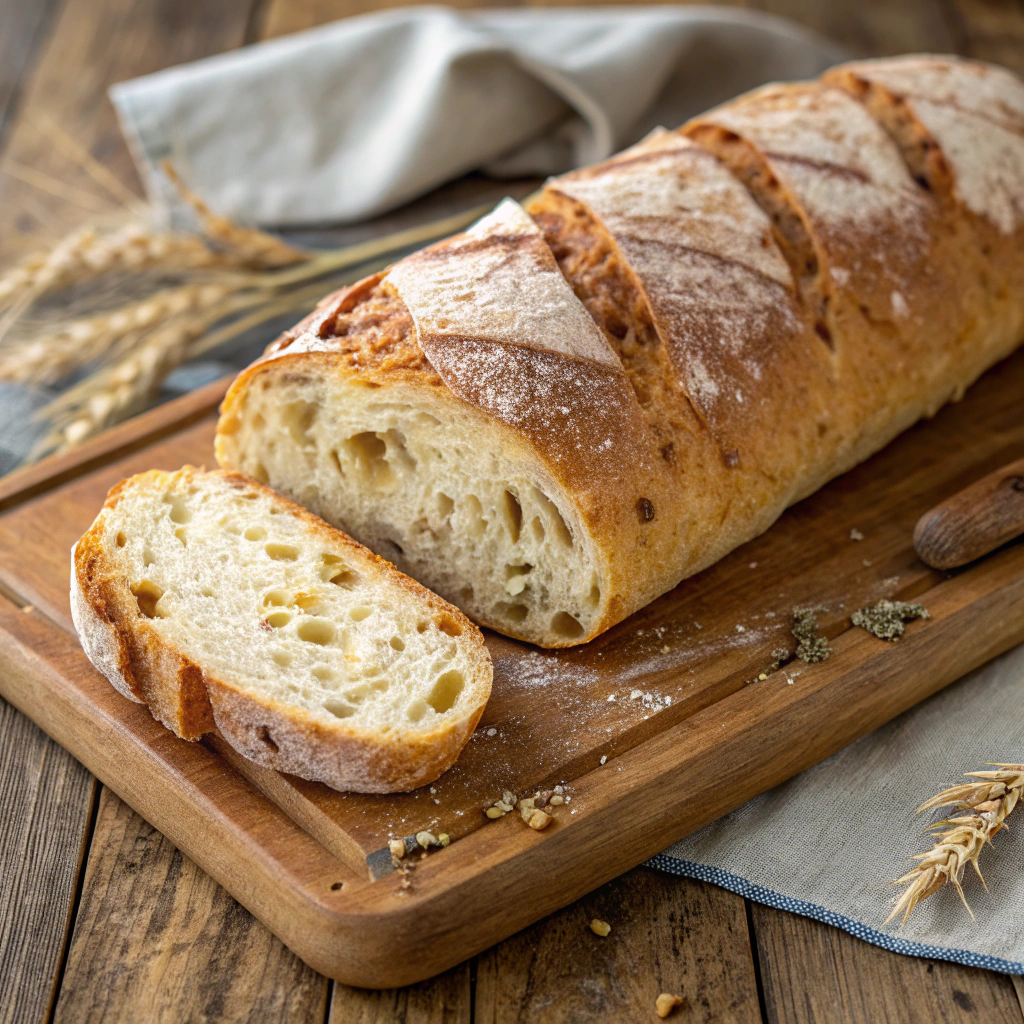
Crusty Italian Bread for Everyday Meals
Making crusty Italian bread at home is easier than you think, and it’s perfect for everyday meals. With a few simple ingredients and some straightforward instructions, you can enjoy the delicious taste of authentic Italian bread without leaving your kitchen.
Ingredients List
To make a delicious crusty Italian bread, you’ll need the following ingredients:
- 2 cups of warm water
- 2 teaspoons of active dry yeast
- 3 tablespoons of olive oil
- 1 teaspoon of salt
- 4 cups of all-purpose flour
Step-by-Step Baking Instructions
Follow these steps to create your crusty Italian bread:
Creating a Simple Dough
Combine the warm water and yeast in a large mixing bowl. Let it sit for a few minutes until the yeast is activated. Then, add the olive oil, salt, and 2 cups of flour. Mix until a shaggy dough forms.
Proofing for Flavor Development
Gradually add the remaining flour, kneading the dough until it becomes smooth and elastic. Place the dough in a lightly oiled bowl, cover it, and let it rise in a warm place until it has doubled in size.
Baking for the Perfect Crust
Preheat your oven to 425°F (220°C). Punch down the dough and shape it into a round or oblong loaf. Place the loaf on a baking sheet lined with parchment paper, and bake for 25-30 minutes, or until the bread is golden brown and sounds hollow when tapped on the bottom.
Pairing with Italian Dishes
Crusty Italian bread is versatile and can be paired with a variety of Italian dishes. Enjoy it with soups, salads, or as a side to your favorite pasta dishes. You can also use it to make delicious sandwiches or toast it for a quick snack.
Troubleshooting Common Italian Bread Baking Problems
Italian bread baking is an art that requires patience and practice, and knowing how to troubleshoot common issues can make all the difference. Even with the best recipes, bakers can encounter problems that affect the quality of their bread.
Fixing Dough Issues
Dough problems are common when baking Italian bread. If your dough is too sticky, try adding a small amount of flour. Conversely, if it’s too dry, a bit more water can help. Ensure your yeast is fresh and that you’re using the right type of flour for your recipe.
Addressing Baking and Texture Problems
Baking issues can result in bread that’s not perfectly cooked. If your bread is too dense, check your oven temperature and ensure you’re not overmixing the dough. For bread that’s too crumbly, try adjusting your baking time or the moisture content in your dough.
Storage and Freshness Tips
Proper storage is key to maintaining the freshness of your Italian bread. Store your bread in a cool, dry place or freeze it for longer storage. To keep it fresh, avoid storing it in direct sunlight or humid environments.
| Issue | Possible Cause | Solution |
| Dough too sticky | Too much water | Add a bit more flour |
| Bread too dense | Overmixing or incorrect oven temperature | Adjust mixing time and check oven temperature |
| Bread not fresh | Improper storage | Store in a cool, dry place or freeze |
Conclusion: Mastering the Art of Italian Bread at Home
With the seven Italian bread recipes and tips provided, you’re now equipped to improve your baking skills and bake delicious italian bread at home. From classic Ciabatta to sweet Italian Easter Bread, the world of Italian bread is vast and inviting.
As you continue to bake and experiment with different recipes, you’ll develop the skills and confidence to create authentic italian bread that rivals your favorite bakery. So, get baking and enjoy the process of mastering the art of italian bread at home.
FAQ
What type of flour is best for making Italian bread?
For authentic Italian bread, “00” flour or Caputo flour is recommended, but you can also use bread flour or all-purpose flour as a substitute. The type of flour you choose will affect the texture and flavor of your bread.
How do I achieve a perfect crust on my Italian bread?
To get a perfect crust, make sure to bake your bread at a high temperature, use a baking stone or baking steel, and create steam in the oven. You can also try using a broiler for a few seconds to give it a nice golden brown color.
Can I make Italian bread without a stand mixer?
Yes, you can make Italian bread without a stand mixer. You can mix and knead the dough by hand, which will take more time and effort, but will still yield great results.
How do I store Italian bread to keep it fresh?
To keep Italian bread fresh, store it in a cool, dry place, such as a bread box or paper bag. You can also freeze it for up to 3 months and thaw it at room temperature when you’re ready to use it.
What’s the difference between Italian bread and focaccia?
Italian bread is a general term that encompasses a variety of breads, while focaccia is a specific type of flatbread that’s typically topped with olive oil, herbs, and sometimes cheese or meat.
Can I customize Italian bread recipes to suit my tastes?
Yes, you can customize Italian bread recipes by adding different herbs, spices, or ingredients to create unique flavor profiles. Feel free to experiment and make the recipes your own.
How long does it take to make Italian bread from scratch?
The time it takes to make Italian bread from scratch can vary depending on the recipe and the level of complexity. Generally, it can take anywhere from 2 to 4 hours, including rising and baking time.
Are Italian bread recipes suitable for beginners?
Yes, many Italian bread recipes are suitable for beginners. Start with simple recipes and gradually move on to more complex ones as you gain experience and confidence in your bread-making skills.
